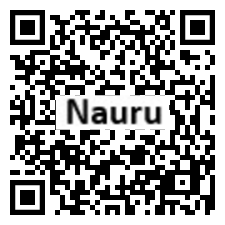Introduction
Background
Nauru was inhabited by Micronesian and Polynesian settlers by around 1000 B.C. In 1798, the British spotted the island. Germany annexed Nauru in 1888. Australia captured Nauru from Germany during World War I, and in 1919, it became a joint Australian-British-New Zealand mandate with Australian administration. Nauru opted for independence in 1968.
Geography
Area
total: 21 sq km
land: 21 sq km
water: 0 sq km
Climate
tropical with a monsoonal pattern; rainy season (November to February)
Natural resources
phosphates, fish
People and Society
Population
9,852 (2023 est.)
Ethnic groups
Nauruan 94.6%, I-Kiribati 2.2%, Fijian 1.3%, other 1.9% (2021 est.)
Languages
Nauruan 93% (official, a distinct Pacific Island language), English 2% (widely understood, spoken, and used for most government and commercial purposes), other 5% (includes Gilbertese 2% and Chinese 2%) (2011 est.)
Religions
Protestant 60.4% (Nauruan Congregational 34.7%, Assemblies of God 11.6%, Pacific Light House 6.3%, Nauru Independent 3.6%, Baptist 1.5, Seventh Day Adventist 1.3%, other Protestant 1.4%), Roman Catholic 33.9%, other 4.2%, none 1.3%, no answer 0.3% (2021 est.)
Population growth rate
0.42% (2023 est.)
Government
Government type
parliamentary republic
Capital
name: no official capital; government offices in the Yaren District
Executive branch
chief of state: President David ADEANG (since 30 October 2023); note - the president is both chief of state and head of government
head of government: President David ADEANG (since 30 October 2023)
Legislative branch
description: unicameral Parliament (19 seats; members directly elected in multi-seat constituencies by majority vote using the "Dowdall" counting system by which voters rank candidates on their ballots; members serve 3-year terms)
Economy
Economic overview
upper-middle-income Pacific island country; phosphate resource exhaustion made island interior uninhabitable; licenses fishing rights; houses Australia’s Regional Processing Centre; former tax haven; largely dependent on foreign subsidies
Real GDP (purchasing power parity)
$149.474 million (2021 est.)
$147.265 million (2020 est.)
$145.591 million (2019 est.)
Real GDP per capita
$11,900 (2021 est.)
$12,000 (2020 est.)
$12,000 (2019 est.)
Agricultural products
coconuts, tropical fruit, vegetables, pork, eggs, pig offals, pig fat, poultry, papayas, cabbages
Industries
phosphate mining, offshore banking, coconut products
Remittances
5.27% of GDP (2018 est.)
9.46% of GDP (2017 est.)
11.77% of GDP (2016 est.)
Exports
$187 million (2021 est.)
$105 million (2020 est.)
$32.7 million (2019 est.)
Exports - partners
Thailand 49%, Saudi Arabia 14%, Philippines 11%, South Korea 8%, India 7% (2021)
Exports - commodities
skipjack, calcium phosphates, tuna, cars, delivery trucks, low-voltage protection equipment (2021)
Imports
$94.2 million (2021 est.)
$103 million (2020 est.)
$88.2 million (2019 est.)
Imports - partners
Australia 36%, Taiwan 16%, China 12%, Japan 12%, Nigeria 7% (2021)
Imports - commodities
refined petroleum, tugboats, cigarettes, cars, construction vehicles (2021)
Exchange rates
Australian dollars (AUD) per US dollar -
Exchange rates:
1.331 (2021 est.)
1.453 (2020 est.)
1.439 (2019 est.)
1.338 (2018 est.)
1.305 (2017 est.)
Page last updated: Wednesday, December 13, 2023
